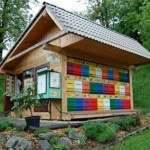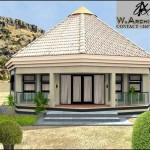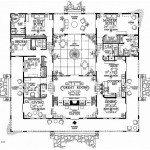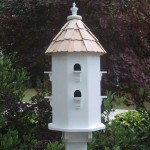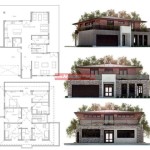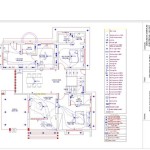House Plan Sri Lankan Style: A Comprehensive Overview
Sri Lankan architecture reflects a rich tapestry of influences, woven from indigenous traditions, colonial encounters, and modern innovations. Designing a house plan in Sri Lankan style involves understanding these historical layers and translating them into functional and aesthetically pleasing living spaces. This article explores the key characteristics of Sri Lankan house plans, examining the crucial elements that contribute to their distinct identity.
The island nation's climate plays a significant role in shaping its architectural sensibilities. Hot and humid conditions necessitate designs that prioritize natural ventilation, shade, and the use of materials that effectively manage heat gain. Furthermore, cultural values emphasizing communal living, respect for nature, and spiritual well-being are integral to the design process.
Ultimately, a well-executed Sri Lankan style house plan successfully integrates these factors, resulting in homes that are not only visually appealing but also highly conducive to comfortable and sustainable living.
Key Point 1: Architectural Features and Spatial Organization
Traditional Sri Lankan house plans often feature a central courtyard, known as a "meda midula," which serves as the heart of the home. This open space promotes airflow, provides natural light, and acts as a visual connection to the surrounding environment. The courtyard may incorporate a water feature, such as a small pond or fountain, to further enhance the cooling effect and create a tranquil atmosphere.
Verandahs, or pillared porches, are another prominent feature, wrapping around the house to provide shaded outdoor living areas. These spaces serve as transitional zones between the interior and exterior, offering protection from the sun and rain while allowing residents to enjoy the fresh air. Verandahs are commonly used for seating, dining, and socializing.
Roofs are typically high-pitched, often with overhanging eaves, to facilitate rainwater runoff and provide additional shade. The use of clay tiles or locally sourced materials for roofing is common, contributing to the aesthetic appeal and thermal performance of the building. Gable roofs are frequently employed, adding a distinctive architectural element to the design.
Spatial organization typically involves a clear separation between public and private spaces. Living areas, dining rooms, and kitchens are generally clustered together, while bedrooms and bathrooms are located in more secluded areas of the house. This arrangement allows for both communal interaction and individual privacy.
The layout often incorporates a formal living room or "living hall," intended for receiving guests and special occasions. This space is typically more elaborately decorated than other areas of the house. Adjacency to the verandah allows this space to extend outwards, creating a greater sense of openness.
Kitchens are often designed with both indoor and outdoor components. Outdoor kitchens, or "pantry areas," are used for tasks such as washing dishes and preparing food that generates smoke or strong odors. This helps to keep the main kitchen clean and minimizes the spread of cooking smells throughout the house.
Key Point 2: Materials and Construction Techniques
The choice of materials is crucial in achieving an authentic Sri Lankan style house. Traditionally, locally sourced materials such as clay, timber, and stone are favored for their aesthetic appeal, durability, and environmental sustainability. The use of these materials also helps to connect the house to its natural surroundings.
Clay bricks are commonly used for walls, providing excellent thermal mass and insulation. The bricks can be left exposed to create a rustic look or plastered and painted to achieve a more refined appearance. The use of "kabook," a type of laterite stone, is also prevalent, particularly in older buildings. Kabook offers good insulation and a distinctive reddish-brown color.
Timber is widely used for structural elements, such as roof trusses and beams, as well as for doors, windows, and flooring. Teak, mahogany, and other locally grown hardwoods are prized for their strength, durability, and beauty. Timber is often carved with intricate designs, adding a touch of elegance and craftsmanship to the house.
Roofs are typically covered with clay tiles, which provide excellent weather protection and a traditional aesthetic. The tiles are often laid in overlapping patterns, creating a visually appealing texture. Concrete tiles that mimic the look of clay tiles are also available, offering a more affordable and lightweight alternative.
Flooring options include polished concrete, terrazzo, and locally sourced stone. These materials are durable, easy to maintain, and provide a cooling effect underfoot. Timber flooring is also used in some areas, particularly in bedrooms and living rooms, to create a warmer and more comfortable atmosphere.
Construction techniques often involve a combination of traditional methods and modern practices. Skilled craftsmen are employed to create intricate carvings, build sturdy structures, and ensure the quality of the workmanship. Sustainable building practices, such as rainwater harvesting and solar energy utilization, are increasingly incorporated into modern Sri Lankan house designs.
Key Point 3: Landscape Integration and Environmental Considerations
A successful Sri Lankan style house plan emphasizes the integration of the building with its surrounding landscape. Gardens are an integral part of the design, creating a seamless transition between the indoor and outdoor spaces. The use of native plants and trees is encouraged to promote biodiversity and create a sustainable ecosystem.
Courtyards and verandahs blurs the lines between inside and outside with strategically located plants and trees. These green spaces serve as extensions of the living areas, providing a tranquil and refreshing environment for relaxation and recreation. Water features, such as ponds and fountains, are often incorporated into the landscape to enhance the aesthetic appeal and create a sense of serenity.
The orientation of the house is carefully considered to maximize natural light and ventilation while minimizing exposure to direct sunlight. Overhanging eaves and strategically placed trees provide shade, reducing the need for artificial cooling. The use of solar panels and other renewable energy sources can further reduce the environmental impact of the house.
Rainwater harvesting systems are commonly used to collect rainwater for irrigation and other non-potable purposes. This helps to conserve water and reduce the reliance on municipal water supplies. Greywater recycling systems, which treat wastewater from sinks and showers for reuse in irrigation, are also increasingly being adopted.
Sustainable landscaping practices, such as composting and mulching, are employed to improve soil fertility and reduce the need for chemical fertilizers and pesticides. The use of permeable paving materials allows rainwater to infiltrate the ground, replenishing groundwater reserves and reducing runoff.
Consideration is given to the natural topography of the site, minimizing alterations to the landscape and preserving existing trees and vegetation. The house is designed to blend harmoniously with its surroundings, creating a sense of place and belonging.
In conclusion, designing a house plan in Sri Lankan style requires a deep understanding of the country's architectural heritage, climate, and cultural values. By incorporating key features such as courtyards, verandahs, traditional materials, and sustainable landscaping practices, it is possible to create homes that are both aesthetically pleasing and environmentally responsible. This approach ensures that the house not only meets the needs of its occupants but also contributes to the preservation of Sri Lanka's unique architectural identity.
Beyond the core structural and material elements, careful attention should be paid to interior design elements. Traditional Sri Lankan homes often feature handcrafted furniture, intricate carvings, and vibrant textiles. These details add character and personality to the space, creating a warm and inviting atmosphere. The use of natural light is also emphasized, with large windows and skylights allowing sunlight to flood the interior.
The integration of technology is also becoming increasingly important in modern Sri Lankan house designs. Smart home systems can be used to control lighting, temperature, and security, enhancing comfort and convenience. However, it is important to integrate these technologies in a way that complements the traditional aesthetic, rather than detracting from it.
Ultimately, a successful Sri Lankan style house plan is one that seamlessly blends tradition and modernity, creating a home that is both functional and beautiful. It is a testament to the country's rich architectural heritage and its commitment to sustainable living.

House Designs Sri Lanka Design New Plans Home

Kedella Homes Design Build Your Dream Home With Us

Desi Plan Singco Engineering Dafodil Model House Advertising With Us න ව ස ලස ම හ ඉ ජ ර සහය Create Floor Plans And Home Houseplansrilanka Com Best Construction Company In

Kedella Homes Design Build Your Dream Home With Us

Budget House Design In Sri Lanka ලක ෂ 29 5 Plans For Lankan Style

House Plans In Sri Lanka Wedabima Com

Plans Lk Home Sri Lanka Box

12 House Design Idea With Front Size 9 5 Meter You Need To See Simple A39 Modern Floor Plans

Three Story House Plan And 3d Design Kaduwela Viharaa Home

House Plans In Sri Lanka Two Story 3d Home Kedella

